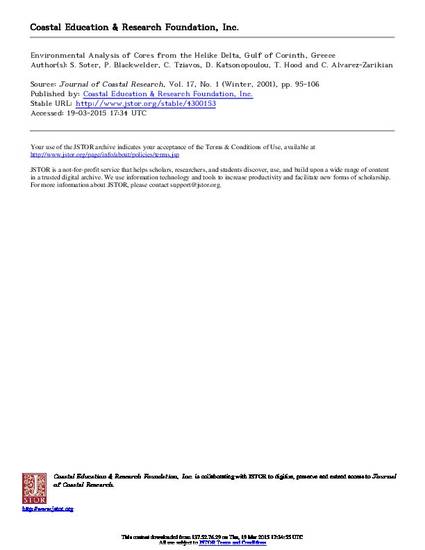
- Delta,
- Greece,
- Microfauna,
- Holocene,
- Transgression
The fan delta southeast of Aigion on the southwest shore of the Gulf of Corinth was the site of ancient Helike, a city destroyed and submerged by an earthquake and seismic sea wave in 373 BC. Bore holes drilled on the Helike Delta yielded numerous ceramic fragments in the upper 12 meters, and a record of changing local environments on the delta during the Holocene period. At about 8 m below present sea level the core profiles show a general upward transition from marine to lacustrine/lagoonalc onditions.T he transition dates from about 8 kyr BP and is probably due to the deceleration of global sea level rise at the end of the last Ice Age. The deceleration apparently induced an upward and seaward progression of a zone of green clay and silt associated with brackish fauna.
Available at: http://works.bepress.com/patricia-blackwelder/14/

©2001 Coastal Education & Research Foundation, Inc.